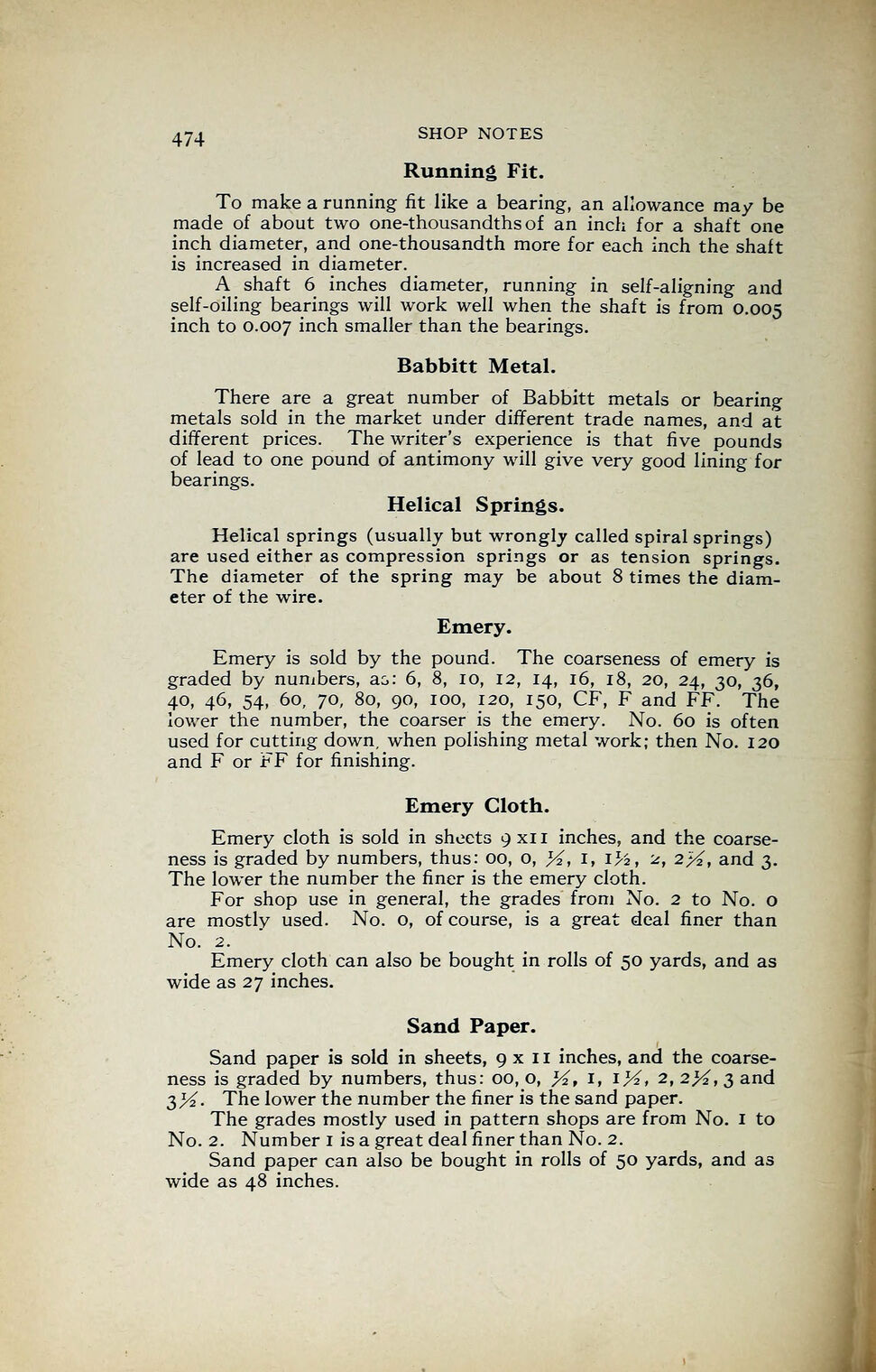
Full resolution (JPEG) - On this page / på denna sida - Shop Notes - Running fit - Babbitt metal - Helical springs - Emery, emery cloth, sandpaper

<< prev. page << föreg. sida << >> nästa sida >> next page >>
Below is the raw OCR text
from the above scanned image.
Do you see an error? Proofread the page now!
Här nedan syns maskintolkade texten från faksimilbilden ovan.
Ser du något fel? Korrekturläs sidan nu!
This page has never been proofread. / Denna sida har aldrig korrekturlästs.
474 SHOP NOTES
Running Fit.
To make a running fit like a bearing, an allowance may be
made of about two one-thousandths of an inch for a shaft one
inch diameter, and one-thousandth more for each inch the shaft
is increased in diameter.
A shaft 6 inches diameter, running in self-aligning and
self-oiling bearings will work well when the shaft is from 0.005
inch to 0.007 inch smaller than the bearings.
Babbitt Metal.
There are a great number of Babbitt metals or bearing
metals sold in the market under different trade names, and at
different prices. The writer’s experience is that five pounds
of lead to one pound of antimony will give very good lining for
bearings.
Helical Springs.
Helical springs (usually but wrongly called spiral springs)
are used either as compression springs or as tension springs.
The diameter of the spring may be about 8 times the diam-
eter of the wire.
Emery.
Emery is sold by the pound. The coarseness of emery is
graded by numbers, ao: 6, 8, 10, 12, 14, 16, 18, 20, 24, 30, 36,
40, 46, 54, 60, 70, 80, 90, 100, 120, 150, CF, F and FF. The
lower the number, the coarser is the emery. No. 60 is often
used for cutting down, when polishing metal work; then No. 120
and F or FF for finishing.
Emery Cloth.
Emery cloth is sold in sheets 9x11 inches, and the coarse-
ness is graded by numbers, thus: 00, o, %, 1, iy
2 , 2, 2%, and 3.
The lower the number the finer is the emery cloth.
For shop use in general, the grades from No. 2 to No. o
are mostly used. No. o, of course, is a great deal finer than
No. 2.
Emery cloth can also be bought in rolls of 50 yards, and as
wide as 2j inches.
Sand Paper.
Sand paper is sold in sheets, 9x11 inches, and the coarse-
ness is graded by numbers, thus: 00, o, j4 t 1, i}4, 2, 2}4, 3 and
3>^. The lower the number the finer is the sand paper.
The grades mostly used in pattern shops are from No. 1 to
No. 2. Number 1 is a great deal finer than No. 2.
Sand paper can also be bought in rolls of 50 yards, and as
wide as 48 inches.
<< prev. page << föreg. sida << >> nästa sida >> next page >>